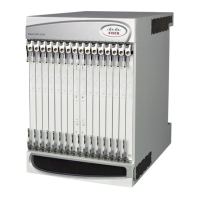Cisco ASR 5000 Series External Storage Server Installation and Administration Guide ▄
Chapter 2
Veritas Cluster Installation and Management
The cluster mode functionality enables L-ESS to provide high availability and critical redundancy support to retrieve
CDRs in failure of any one of the systems. An L-ESS cluster comprises two L-ESS systems, or nodes, that work
together as a single, continuously available system to provide applications, system resources, and data to L-ESS users.
Each L-ESS node on a cluster is a fully functional, standalone system. However, in a clustered environment, the L-ESS
nodes are connected by an interconnected network and work together as a single entity to provide increased data
availability.
Highly available clusters provide nearly continuous access to data and applications by keeping the cluster running
through failures that would normally bring down a single server system.
The cluster setup offers several advantages over traditional single-server systems. These advantages include:
Support for failover and scalable services
Capacity for modular growth
Low entry price compared to traditional hardware fault-tolerant systems
Reduce or eliminate system downtime because of software or hardware failure
Ensure availability of data and applications to L-ESS user, regardless of the kind of failure that would normally
take down a single-server system.
Provide enhanced availability of the system by enabling you to perform maintenance without shutting down the
entire cluster.
Following are the cluster components that work with L-ESS to provide this functionality:
L-ESS Cluster Node
A L-ESS cluster node is a L-ESS server that runs both the L-ESS Application software and Cluster Agent
software. The Cluster Agent enables carrier to network two L-ESS nodes in a cluster. Every L-ESS node in the
cluster is aware when another L-ESS node joins or leaves the cluster. Also, every L-ESS node in the cluster is
aware of the resources that are running locally as well as the resources that are running on the other L-ESS
cluster nodes.
Each L-ESS cluster node is a standalone server that runs its own processes. These processes communicate with
one another to form what looks like (to a network client) a single system that co-operatively provides
applications, system resources, and data to L-ESS users.
Common Storage System
A common storage system is a fiber channel (FC) -based cluster storage with FC drives for the servers in the
cluster environment. It is interconnected with L-ESS cluster nodes with carrier class network connectivity to
provide high level redundant storage and backup support for CDRs. It serves as common storage for all
connected L-ESS cluster nodes.
This system provides high storage scalability and redundancy with RAID support.
This chapter includes the following topics:
L-ESS Cluster Functional Description
Installing Hardware

